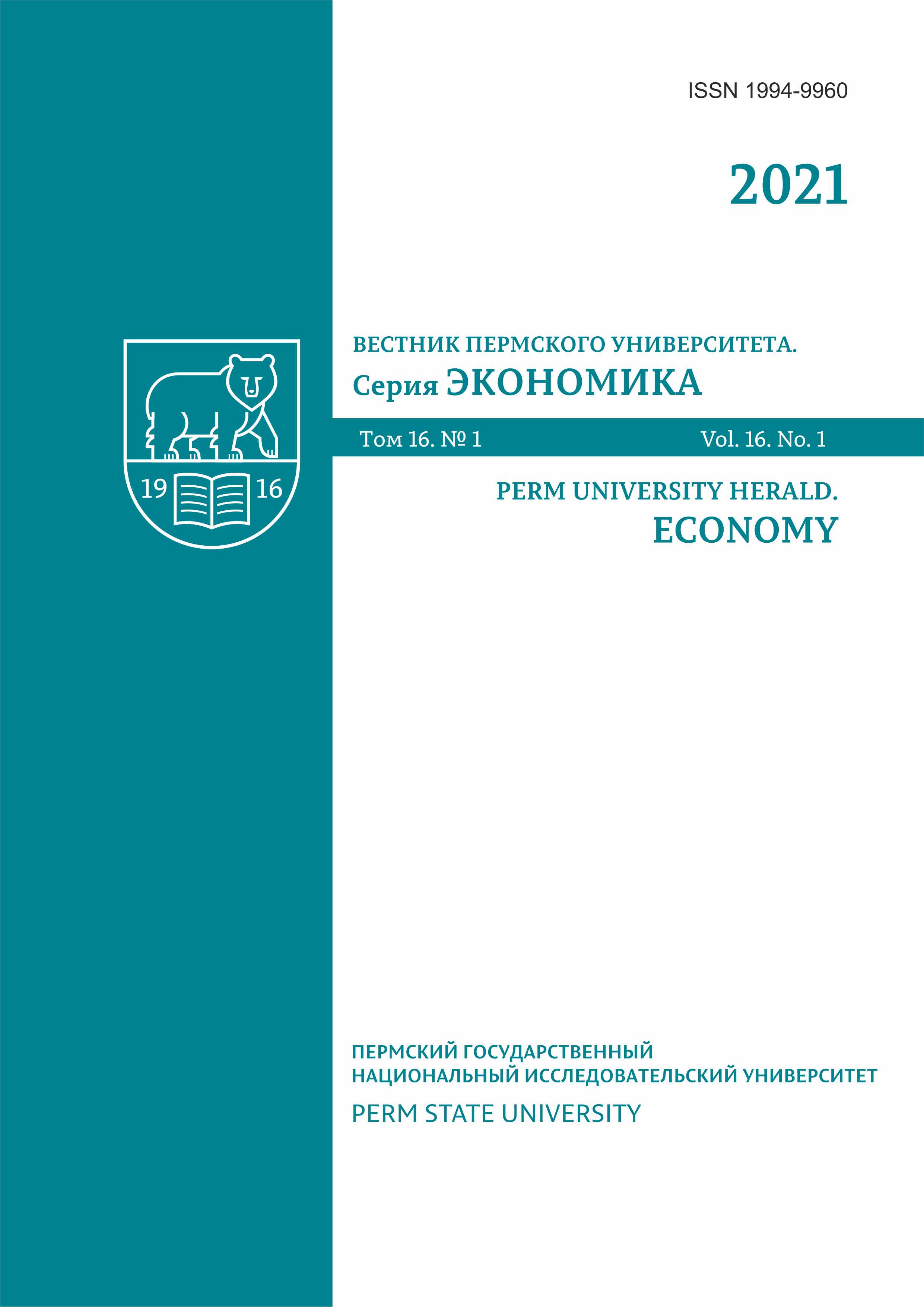Mathematical methods of financial transaction evaluation for fraud
DOI:
https://doi.org/10.17072/1994-9960-2021-1-54-66Abstract
An increase in the number of the financial transaction is currently observed, which triggers more financial frauds and more losses from the cyber attacks in the global economy. Detection of the deviant transactions is a burning issue for modern studies because all bank system participants are looking for minimizing the risks which could arise from the vulnerabilities in online transaction. An increase in the financial losses caused by the financial fraud updates the importance of the mathematical methods to analyze the real data. The purpose of the present study is to develop and to define the best mathematical model to predict fraudulent transactions. The novelty of the study lies in designing different binary choice models based on the panel data to predict the deviant transactions, as well as to compare the econometric models with the models based on the neural networks and tree ensembles and in justifying the choice of the best model. Methodologically, the study applies correlational analysis methods, econometric and neural network methods, decision tree ensembles. The most significant results referred to the scientific novelty of the research are as follows: 1) panel data-based financial transactions have been econometrically analyzed within probit- and logit-models with fixed or random effects; 2) neural network methods and tree ensemble-based method have been applied to predict fraudulent transactions; 3) designed mathematical models have been comparatively analyzed, and the model giving the best result in detecting the fraudulent transaction has been defined. Further research is connected with more profound study of the impact of different factors to check the financial transactions for their fraud nature.
Keywordsfinancial transactions, econometric modeling, panel data, intellectual data analysis, logit-model, probit-model, classification of financial frauds neural network modelling, random forest, prediction
For citationRadionova M.V., Korzukhin A.A., Saushev N.A. Mathematical methods of financial transaction evaluation for fraud. Perm University Herald. Economy, 2021, vol. 16, no. 1, pp. 54–66. DOI 10.17072/1994-9960-2021-1-54-66
References1. Lavion D., et al. PwC’s global economic crime and fraud survey 2018. PwC.com.
2. Franguridi G. Dinamika uslovnykh momentov vysokikh poryadkov i prognozirovanie stoimostnoi mery riska [Higher order conditional order dynamics and forecasting value-at-risk]. Kvantil' [Quantile], 2014, no. 12, pp. 69–82. (In Russian).
3. Palshikar G. The hidden truth – frauds and their control: A critical application for business intelligence, intelligent enterprise. Intelligent Enterprise, 2002, vol. 5, no. 9, pp. 46–51.
4. Amemiya T. The estimation of the variances in a variance-components model. International Economic Review, 1971, vol. 12, iss. 1, pp. 1–13.
5. Lenz H.-J. Data fraud detection: A first general perspective. Enterprise Information Systems. 16th International Conference, ICEIS 2014. Lisbon, Portugal, April 27–30, 2014, pp. 14–35.
6. Bekirova A.S., Klimova V.V., Kuzin M.V., Shchukin B.A. Payment card fraud detection using neural network committee and clustering. Optical Memory and Neural Networks, 2015, no. 24, pp. 193–200.
7. Whitrow C., Hand D.J., Juszczak P. Transaction aggregation as a strategy for credit card fraud detection. Data Mining Knowledge Discovery, 2009, no. 18 (1), pp. 30–55. doi: 10.1007/s10618-008-0116-z.
8. Kaminski A., Kaminski T., Wetzel S., Guan L. Can financial ratios detect fraudulent financial reporting? Managerial Auditing Journal, 2004, vol. 19 (1), pp. 15–28. doi: 10.1108/02686900410509802.
9. Fanning K.M., Cogger K.O. Neural network detection of management fraud using published financial data. International Journal of Intelligent Systems in Accounting, Finance and Management, 1998, vol. 7, iss. 1, pp. 21–41.
10. Kirkos S., Spathis C., Manolopoulos Y. Data mining techniques for the detection of fraudulent financial statements. Expert Systems with Application, 2007, vol. 32, no. 4, pp. 995–1003.
11. Chen F.H., Chi D.-J., Zhu J.-Y. Application of random forest, rough set theory, decision tree and neural network to detect financial statement fraud – Taking corporate governance into consideration. Intelligent Computing Theory. ICIC, 2014, pp. 221–234. doi: 10.1007/978-3-319-09333-8_24.
12. Box G.E.P., Jenkins G. Time series analysis: Forecasting and control (Holden-Day series in time series analysis). Holden-Day, San Francisco, CA, 1976. 575 p.
13. Kumar A., Gupta G. Fraud detection in online transactions using supervised learning techniques. Towards Extensible and Adaptable Methods in Computing, 2018, pp. 309–321. doi: 10.1007/978-981-13-2348-5_23.
14. Gomez J.A., Arevalo J., Paredes R., Nin J. End-to-end neural network architecture for fraud scoring in card payments. Pattern Recognition Letters, 2018, vol. 105, pp. 175–181. doi: 10.1016/j.patrec.2017.08.024.
15. Sat D.M., Krylov G.O., Aidaralieva A.A., Mochalin D.O. Issledovanie i aprobatsiya metoda klasternogo analiza s ispol'zovaniem neironnykh setei dlya otsenki tranzaktsii kriptovalyuty Bitcoin [Research and approbation of cluster analysis method with neural networks for Bitcoin cryptocurrency transaction evaluation]. Informatizatsiya i svyaz' [Informatization and Communication], 2017, no. 3, pp. 107–110. (In Russian).
16. Lopez-Rojas E.A., Elmir A., Axelsson S. Paysim: A financial mobile money simulator for fraud detection. 28th European Modeling and Simulation Symposium, EMSS, Larnaca, 2016, pp. 249–255.
17. Wooldridge J.M. Econometric analysis of cross section and panel data. MIT Press, Cambridge, 2002. 741 p.
18. Ratnikova T.A. Vvedenie v ekonometricheskii analiz panel'nykh dannykh [Introduction to econometric analysis of panel data]. Ekonomicheskii zhurnal VShE [HSE Economic Journal], 2006, vol. 10, no. 4, pp. 638–669. (In Russian).
19. Yasnitskii L.N. Intellektual'nye sistemy [Intellectual systems]. Moscow, Laboratoriya znanii Publ., 2016. 221 p. (In Russian).
20. Breiman L. Random forest. University of California. 2001. 33 p.
21. Arellano M. Panel data econometrics. Oxford University Press, 2003. 231 p.
22. Baltagi B.H. Econometric analysis of cross section and panel data. Chichester, John Wiley & Sons, 1995. 338 p.











